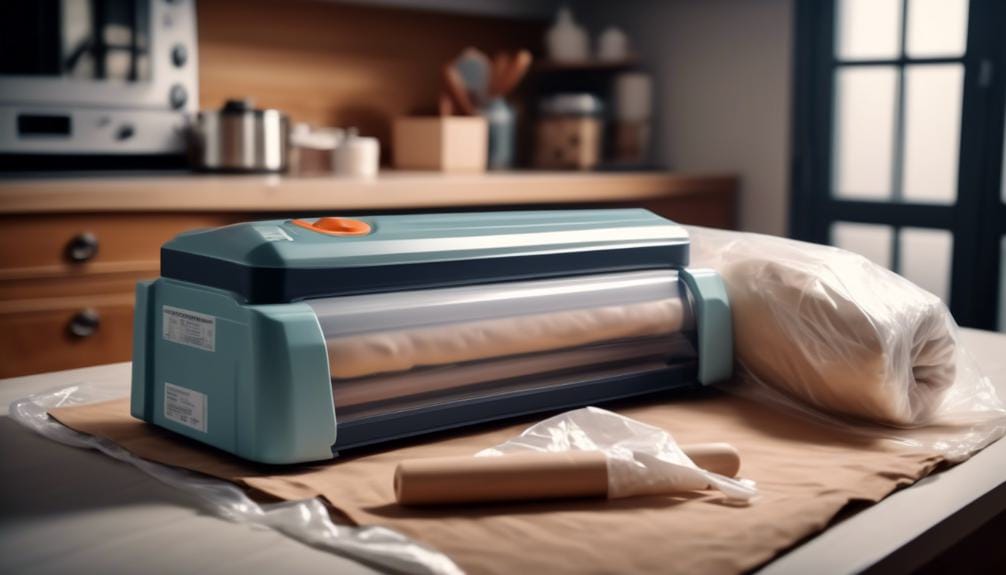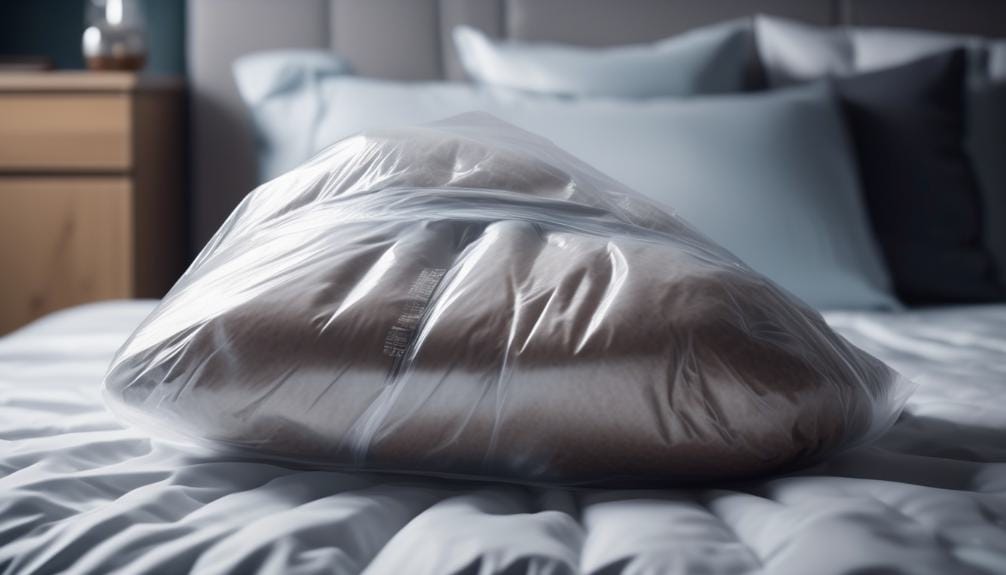How to Vacuum Pack Duvet: Space-Saving Storage Hacks
You might be thinking that vacuum packing a duvet seems like a daunting task, but with the right tools and method, it can be a simple and effective way to save space.
If you’re tired of struggling to find enough storage space for your bulky duvet, then vacuum packing is the solution you’ve been looking for. By following a few straightforward steps, you can compress your duvet and free up valuable space in your closet or storage area.
Whether you’re preparing for a move, need to store seasonal bedding, or simply want to declutter, vacuum packing your duvet is a practical and efficient storage hack that can benefit anyone. Stick around to learn the essential tools you’ll need and the step-by-step process for vacuum packing your duvet, as well as some useful tips for storage and maintenance.
Key Takeaways
- Use vacuum storage bags to pack and store duvets for space-saving storage
- Ensure the duvet is clean, dry, and neatly folded before vacuum packing
- Properly seal the vacuum bag to prevent air from re-entering
- Store vacuum-sealed bags in a cool, dry place and reseal them periodically for long-term storage
Essential Tools for Vacuum Packing

You’ll need a few essential tools for vacuum packing, including:
- Garbage bags
- A vacuum cleaner with a hose
- Ziplock or airtight storage bags
- Rubber bands or scrunchies
- Specific vacuum cleaner attachments for proper sealing and air removal.
To vacuum pack your duvet efficiently, follow these steps:
- Place the duvet inside a large garbage bag.
- Ensure the bag is completely sealed, leaving no gaps.
- Attach the hose of the vacuum cleaner to the bag’s opening.
- Turn on the vacuum and watch as it removes the air from the bag, compressing the duvet.
- Once the air is removed, quickly seal the bag using a ziplock or airtight storage bag.
- Secure the opening with rubber bands or scrunchies to maintain the vacuum seal.
These essential tools and steps will help you achieve space-saving storage for your duvet, making it easier to store and protect.
Preparing the Duvet for Packing

When vacuum packing duvets, the first step in preparing the duvet for packing is to remove the duvet cover and ensure the duvet is clean and dry before proceeding. Here’s how to do it:
- Fold Neatly: Fold the duvet neatly to avoid air pockets and aid in compression. Smooth out any wrinkles to ensure a flat surface.
- Use Vacuum Bags: Place the folded duvet into a vacuum storage bag, vacuum bag, or vacuum sealer bag for packing. These specialized bags are designed to efficiently remove air and reduce the storage space needed.
- Remove Air: Ensure the bag is securely closed before using a vacuum to remove the air. This step is crucial for maximizing the space-saving benefits of vacuum packing.
Vacuum Packing Process

To begin the vacuum packing process, gather the duvet and place it into a large ziplock or airtight bag. Attach the tube to the vacuum cleaner nozzle and insert it into the bag, leaving a small opening.
Turn on the vacuum cleaner to remove the air from the bag, ensuring to hold it closed at the top to prevent air from entering during the vacuuming process. Use a rubber band or scrunchie to secure the bag opening, and slide the tube out while the vacuum cleaner is running.
The suction will compress the duvet, making it more compact for storage. Once the air is fully removed, quickly seal the ziplock or airtight bag to maintain the vacuum.
This space-saving storage hack will help you efficiently pack and store your duvet.
Storage and Maintenance Tips

After vacuum-packing your duvet for efficient storage, it’s essential to consider some practical tips to maintain its condition and maximize space in your home.
- Store Properly: Store vacuum-sealed bags in a cool, dry place using under-bed storage or closet shelves to maintain their condition and prevent damage.
- Regular Resealing: Reseal bags every few months for long-term storage to ensure items remain compressed and protected, using a vacuum cleaner for resealing if necessary.
- Maximize Space: Use vacuum-seal bags for items that aren’t frequently used to maximize space and organization, ensuring that storage bags work effectively for space-saving solutions.
Troubleshooting and Common Mistakes

For troubleshooting and avoiding common mistakes when vacuum-packing your duvet:
- Ensure that the vacuum bag is tightly sealed to prevent air from re-entering during the vacuuming process.
- Overfilling the bags should be avoided to prevent tearing or bursting during compression.
- Before use, check for any holes or punctures in the vacuum bag to ensure optimal air removal.
- Properly secure the vacuum cleaner nozzle to the bag’s opening to prevent air leakage during the vacuuming process.
- Be cautious not to compress delicate or fragile items too tightly, as it may damage them.
When vacuum-packing your duvet:
- Open the bag and lay it flat on a surface.
- Carefully remove the air using the vacuum cleaner.
- Ensure efficient space-saving storage in your linen closet.
Frequently Asked Questions
How Do You Store a Duvet in a Vacuum Bag?
To store a duvet in a vacuum bag, fold it neatly and attach the vacuum cleaner hose to the bag’s nozzle. Remove the air, seal the bag tightly, and store it in a cool, dry place. Label for easy identification.
How Do You Vacuum Seal a Comforter?
To vacuum seal a comforter, place it in a vacuum-seal bag, making sure not to exceed the max-fill line. Use a vacuum with a hose attachment to remove air, then gently press to maintain a flat shape. Store in a cool, dry place.
What Can I Use Instead of a Vacuum Bag?
You can use large black garbage bags, ziplock bags, airtight storage bags, rubber bands, scrunchies, or drawstring kitchen bags as alternatives to vacuum bags. These options help create a DIY vacuum packing effect for space-saving storage.
How Do You Make a Space Saver Bag?
You make a space saver bag by using garbage bags or drawstring kitchen bags. Attach a tube to the vacuum cleaner nozzle, insert it into the bag, leaving a small opening, then turn on the vacuum cleaner to remove the air from the bag.
Conclusion
Now that you’ve vacuum packed your duvet, you can enjoy the extra space in your storage area.
Remember to store it in a cool, dry place to keep it in good condition.
Vacuum packing is a simple and effective way to save space and protect your duvet from dust and moisture.
With these storage hacks, you can keep your duvet fresh and ready for use whenever you need it.
